Some maintain seriously that the Konica Hexar RF is the camera that Leica’s M7 should always have been. It’s a decidedly modern rangefinder camera with a modern motorised film advancing mechanism, a modern and fast shutter and excellent ergonomics.
In this review, I will try to answer whether or not the Konica Hexar RF really is an interesting option. And I also have a theory as to why it was so short-lived, despite its undoubted qualities.
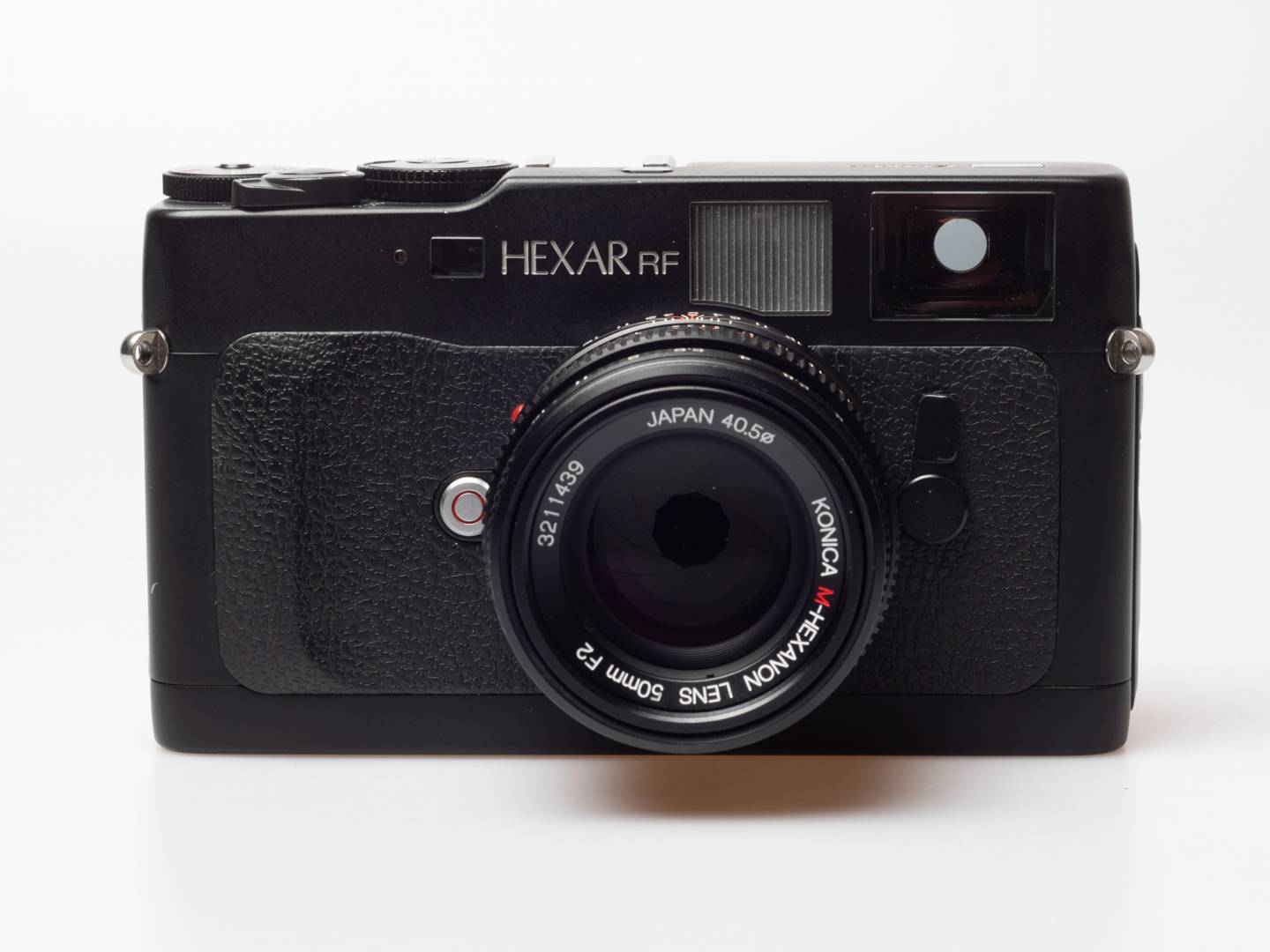
What a contrast this is to our last candidate in The M Files series. In the previous review, we covered the completely mechanical Voigtländer Bessa R4M. Now we are moving to the Hexar RF, generously equipped as it is with electronics. But what the first and second cameras in our article series have in common, is that they are both unique.
On the Bessa R4M, it was the wide-angle rangefinder which made it different from all other M-mount cameras. The Hexar’s unique proposition is that it integrates the almost-the-last development of photography technology into a rangefinder camera (only the Contax G cameras are technologically even more advanced). I present the Hexar RF here together with the Konica M-Hexanon 50mm f/2.
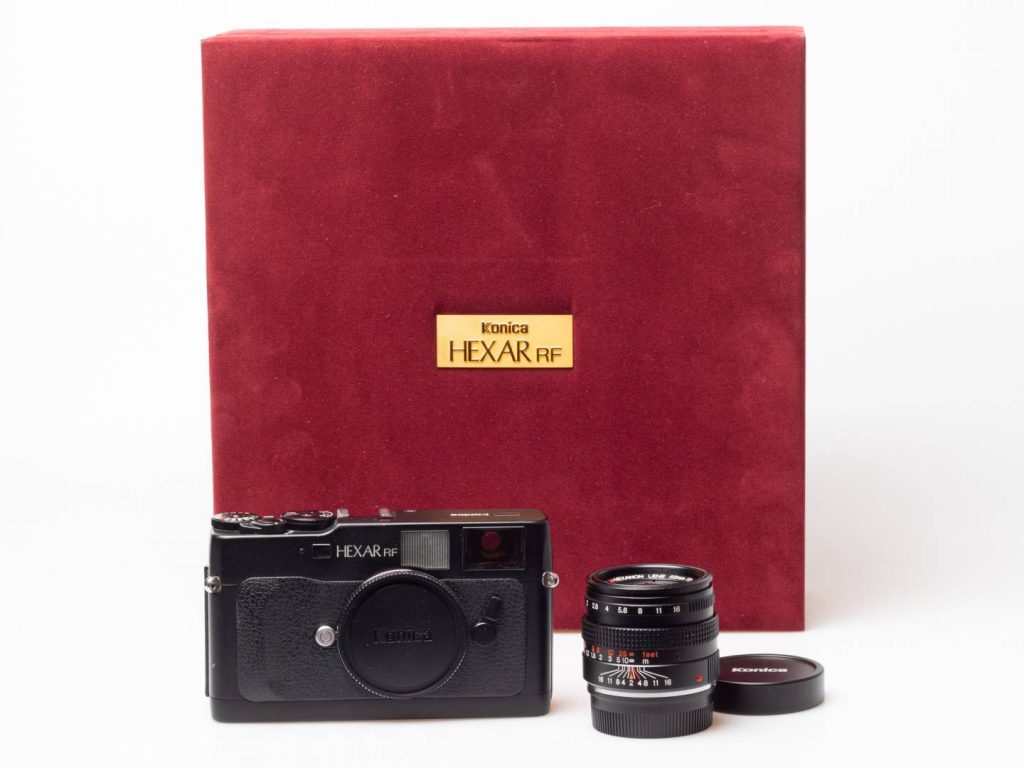

The Konica Hexar RF’s packaging is a statement
I’m not an unboxing type in general, but for the Hexar RF, I have to make an exception. The packaging alone is impressive. The Konica Hexar RF comes in a baroque-looking box lined with red velvet. Besides the body and the 50mm lens, a flash was included, which was missing on my copy. For me, this is ok, since it is a rather simple device without TTL functions (so the Konica Hexar RF was not up to date in this point). It took years—and I guess the impact of the iPhone’s unique packaging—until Leica also learned to pack their products into boxes that are as exciting as their contents and that reassure you that you spent your good money on something rather precious.
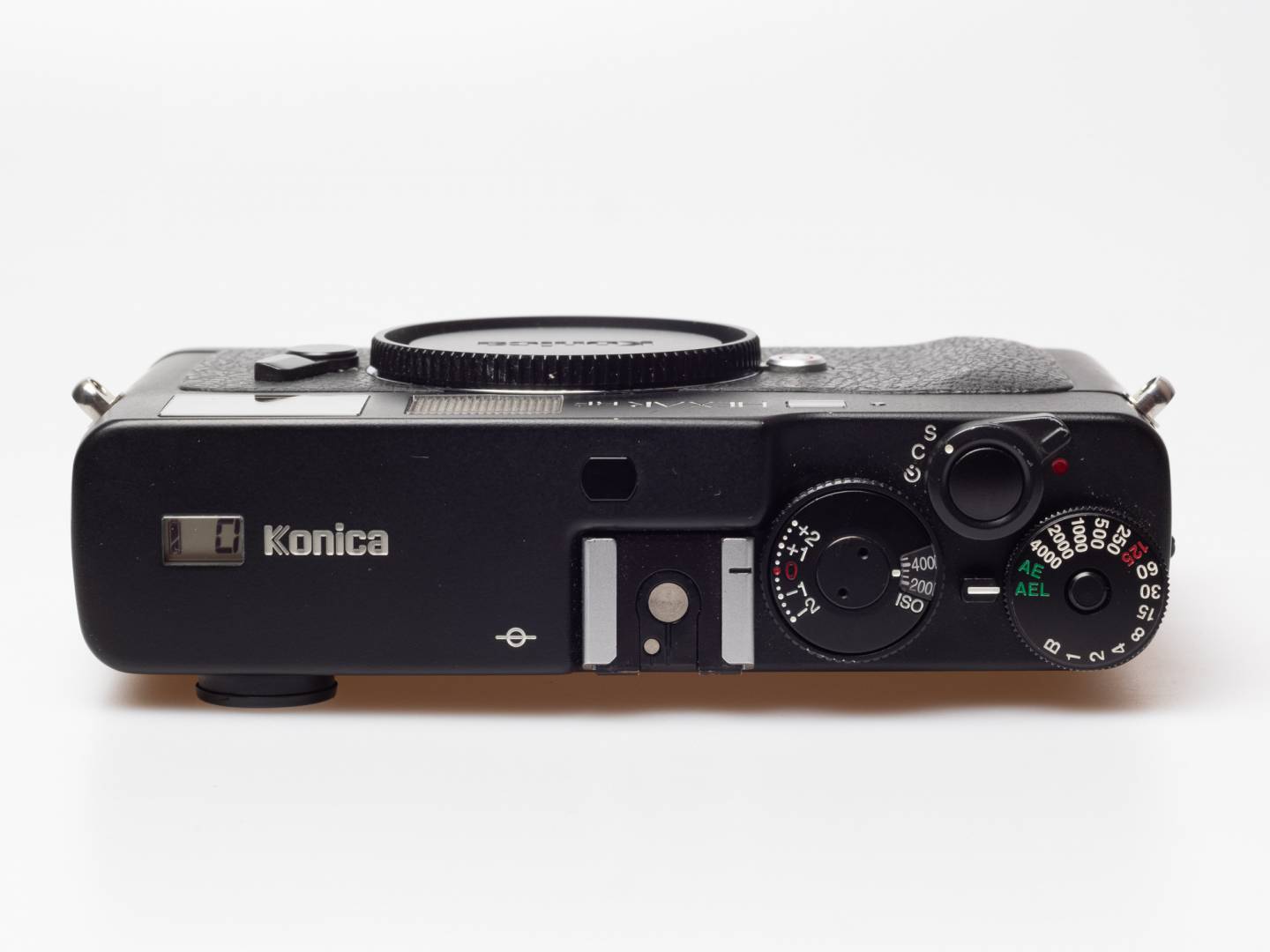
1/4000 of a second, 2.5 frames per minute, auto exposure
Konica was the first manufacturer to produce an M-Mount rival to the Leica. I have no idea why, of all things, Konica made this step. Or was there some unacknowledged cooperation between the two companies after all?
However, it is clear that the Hexar RF represented the first major innovation in this field since the M6 hit the market in 1984. Fifteen years later, in late 1999, the Konica Hexar RF arrived. It had a motorised film transport with 2.5 frames per second and a fast shutter with metal blades that achieved 1/4000 second and a flash sync time of 1/125 second.
The Hexar RF has aperture-priority auto-exposure, AE lock, manual exposure, excellent exposure information in the finder and a counter with LC-display. The film is inserted in the conventional way by opening the rear door. However, nothing works on this camera without batteries (2xCR2 lithium, which should last for years).
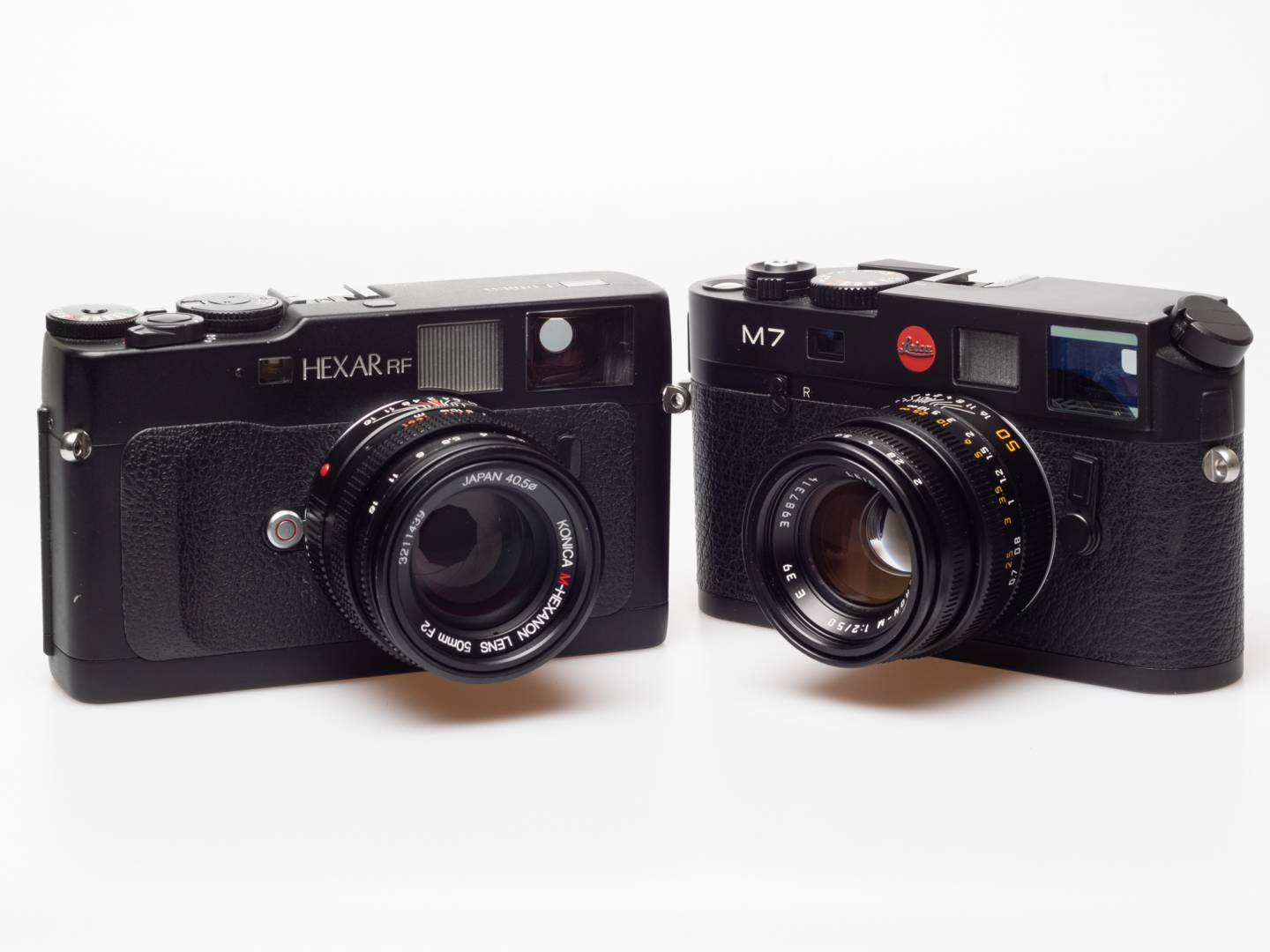
Konica Hexar RF and Leica M6: The miraculous similarity of rangefinders
The rangefinder itself is remarkable. It has the same dimensions to a tenth of a millimetre as the one in the Leica M6: 69.2 millimetres. However, the magnification factor is lower: 0.6 instead of 0.72 in the M6. This means that the image appears smaller, and there is more space around the frame-lines. Good news if you have to wear glasses, but accuracy with long focal lengths and high-speed lenses suffers with this design.
Speaking of frame-lines: depending on the lens, they are automatically displayed, always two of them, 35/135, 50/75 and 28/90. What another miraculous similarity to the Leica M6! For more technical specs I can again recommend Stephen Gandy: https://www.cameraquest.com/konicam.htm
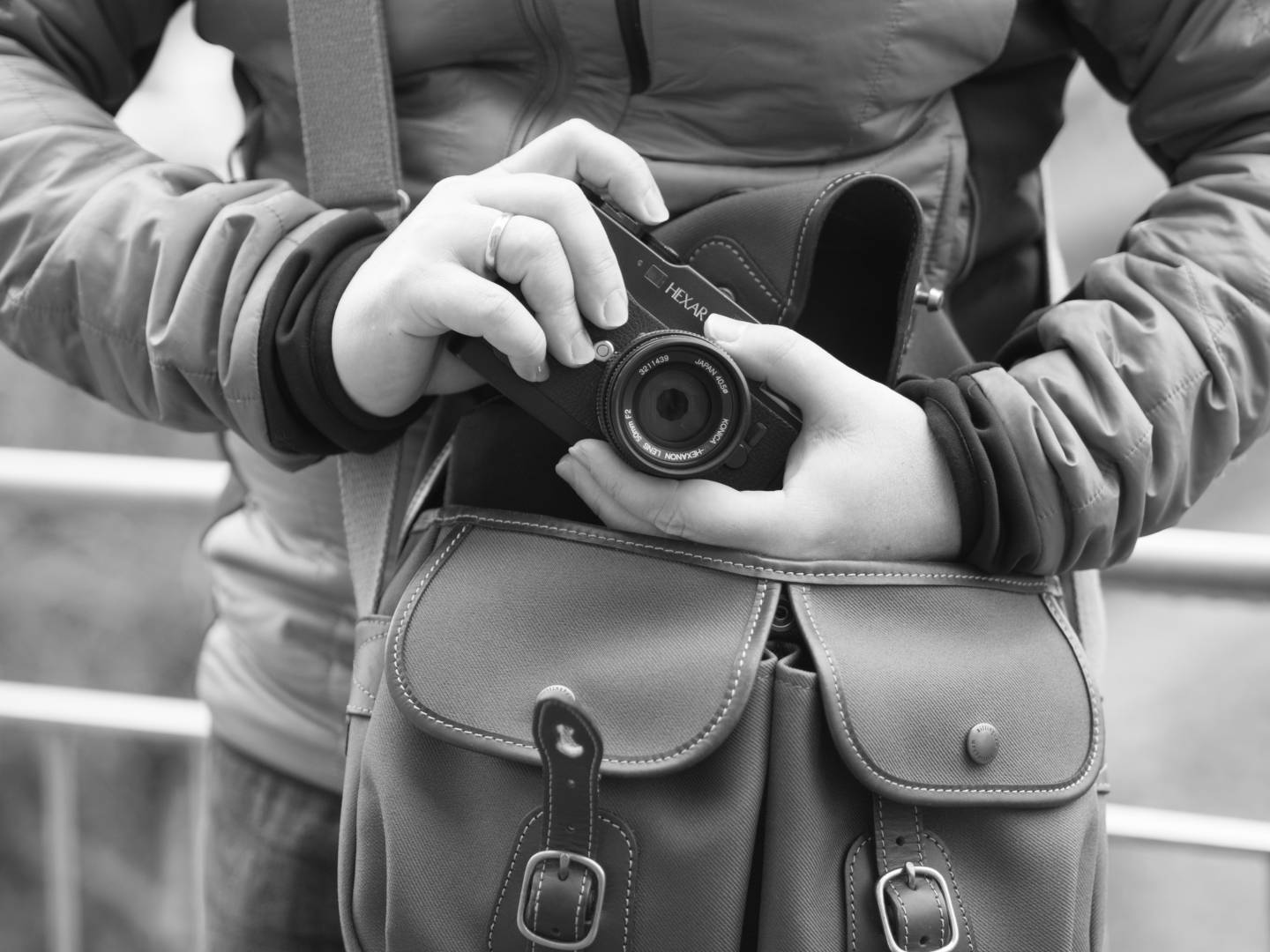
The fastest M mount camera in practical use
In practical use, the Hexar RF is great. It is effortless to handle, and it is fast to work with. This is of course due to the motorised film transport, but the viewfinder is also bright and clear even if it doesn’t quite come close to that of a modern Leica MP or the Zeiss Ikon. I also find the AE lock function brilliant; you simply turn the time wheel one setting further. Everything else about this camera is self-explanatory.
In Konica’s lens line-up, there were both standards and highlights
Of the Konica Hexar lenses, I could test only the 50/2. At the Hexar’s launch, a 28/2.8 and a 90/2.8 were also available. Later, a 35/2, a 50/1.2 and, remarkably, a 21-35/3.4-4 dual-focus lens were added. I would have loved to test the latter, but it isn’t easy to get. Also, the prices for the other Konica M lenses are quite sporty by now.
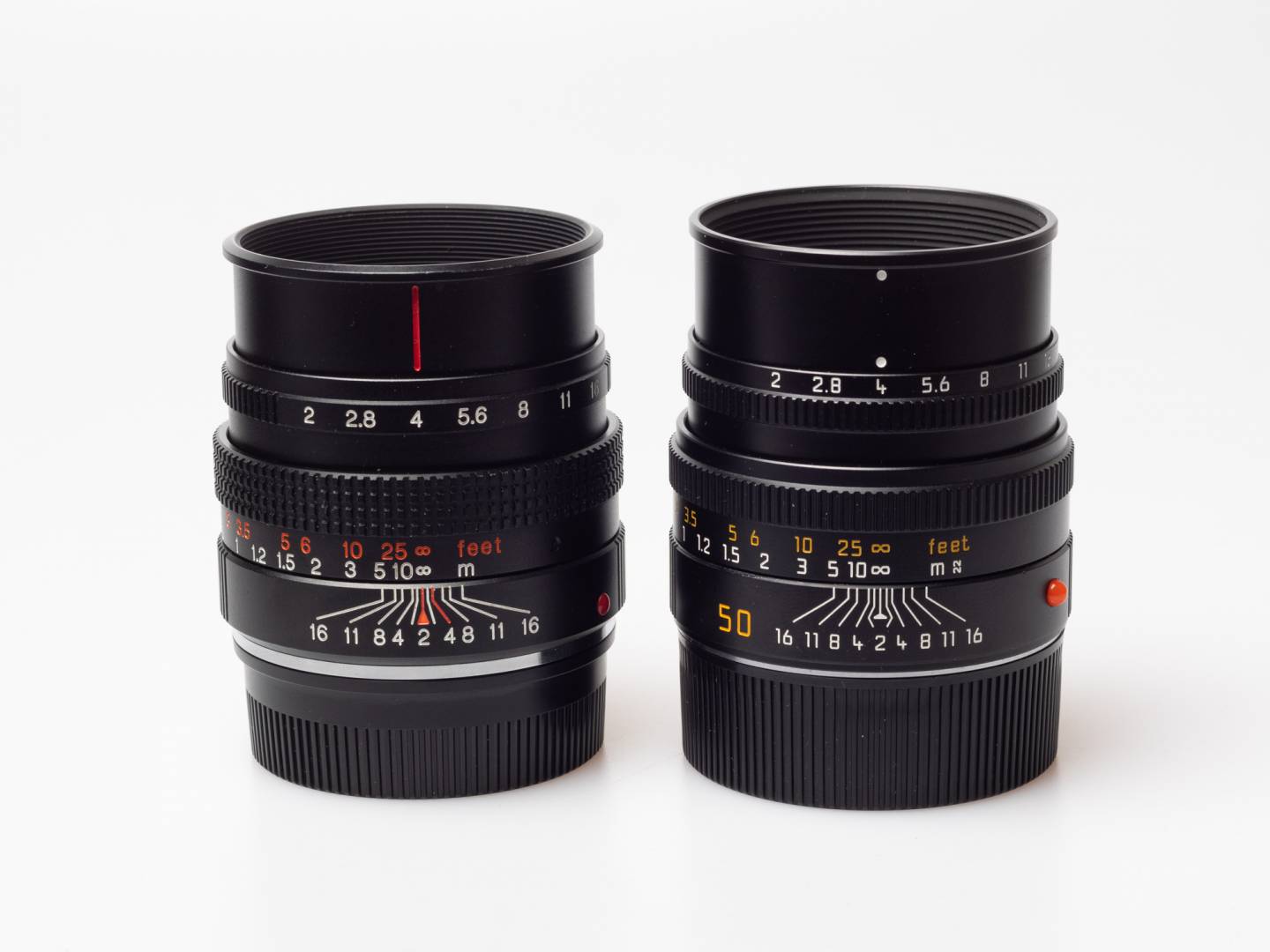
Buying the 50/2 is certainly something I would think twice about. The first caveat is: the Hexanon has a 40.5-millimetre filter thread. This is quite uncommon, and filters, indispensable in black-and-white photography, for example, are hard to find and can hardly be used on any other lens. The second caveat is: there are better 50s made for the Leica M.
The 50 M-Hexanon and its similarity to Leica’s Summicron
The 50/2 cannot disguise its similarity to the Leica Summicron 50/2 Version V. The controls are arranged in the same way, even the built-in pull-out lens shade is constructed identically. Although the suspicion of plagiarism will probably never go away, the 50/2 Hexanon has a good reputation among most reviewers, and I found it very usable as well. It does tend to show moderate flare in backlit situations, and shadows are slightly outshone, especially when shot wide open.
The sharpness at infinity was not always perfect, while close-up rendering is very pleasing. The overall build quality is very good. Interestingly, the 90 Konica Hexanon also seems very similar to the last version of the 90 Leica Elmarit, with which it shares most of the technical data.
The following photos were shot on film
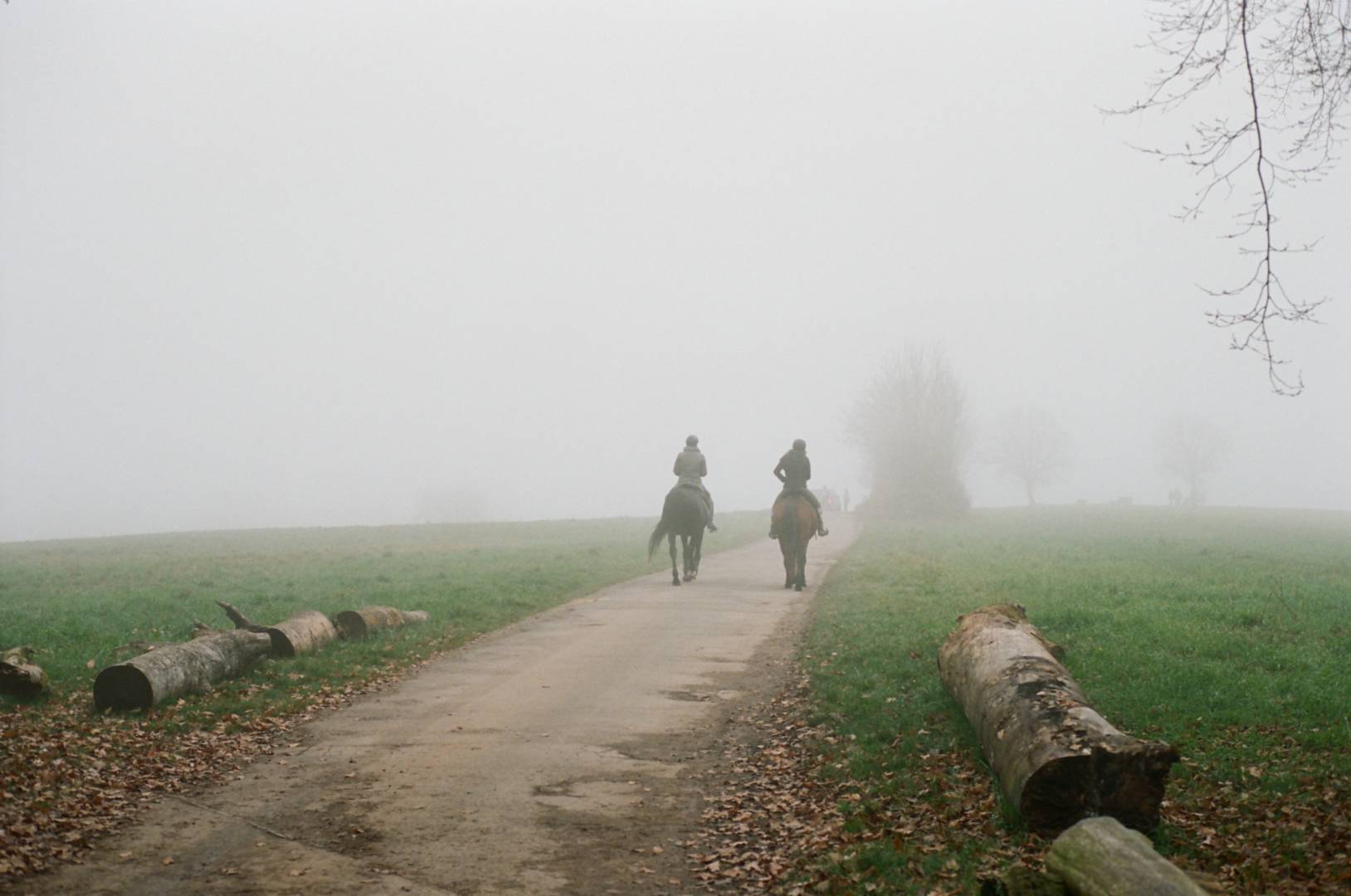


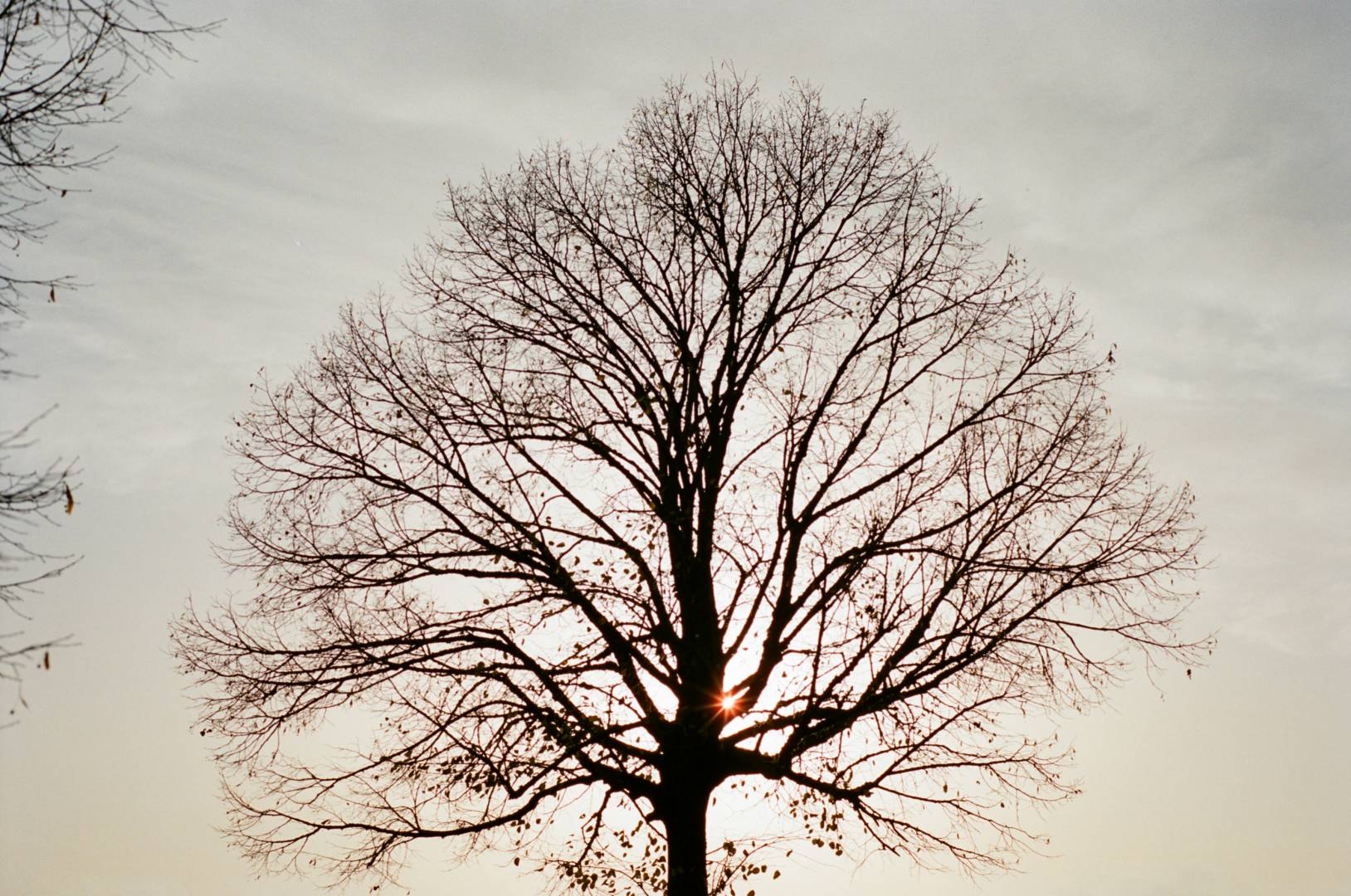


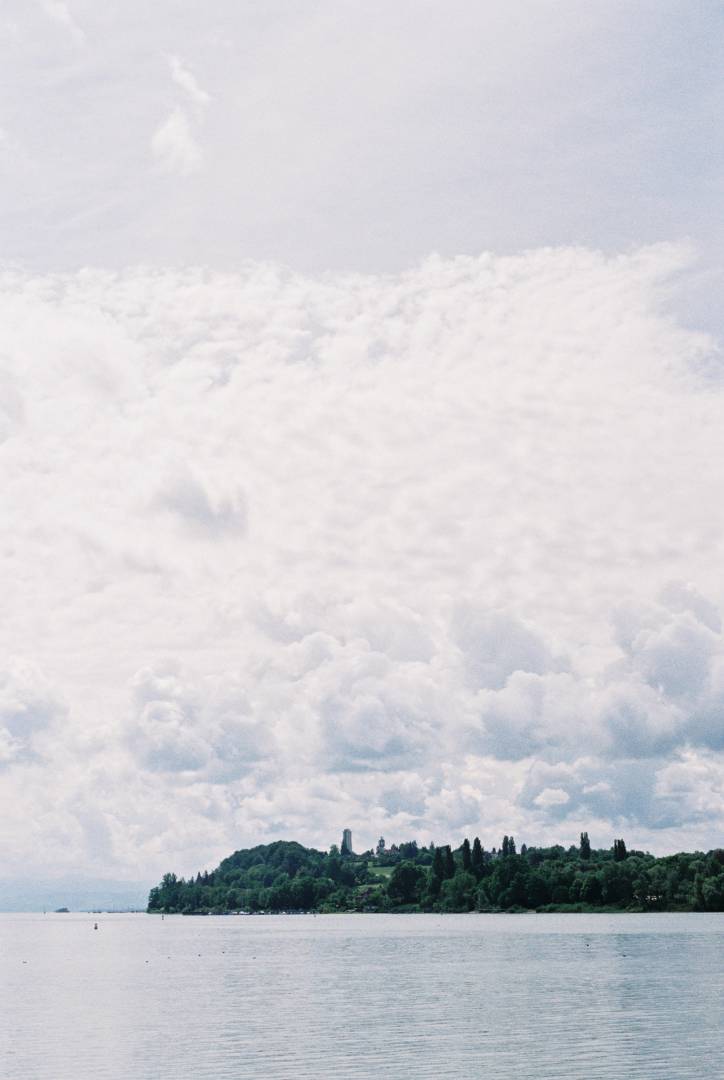
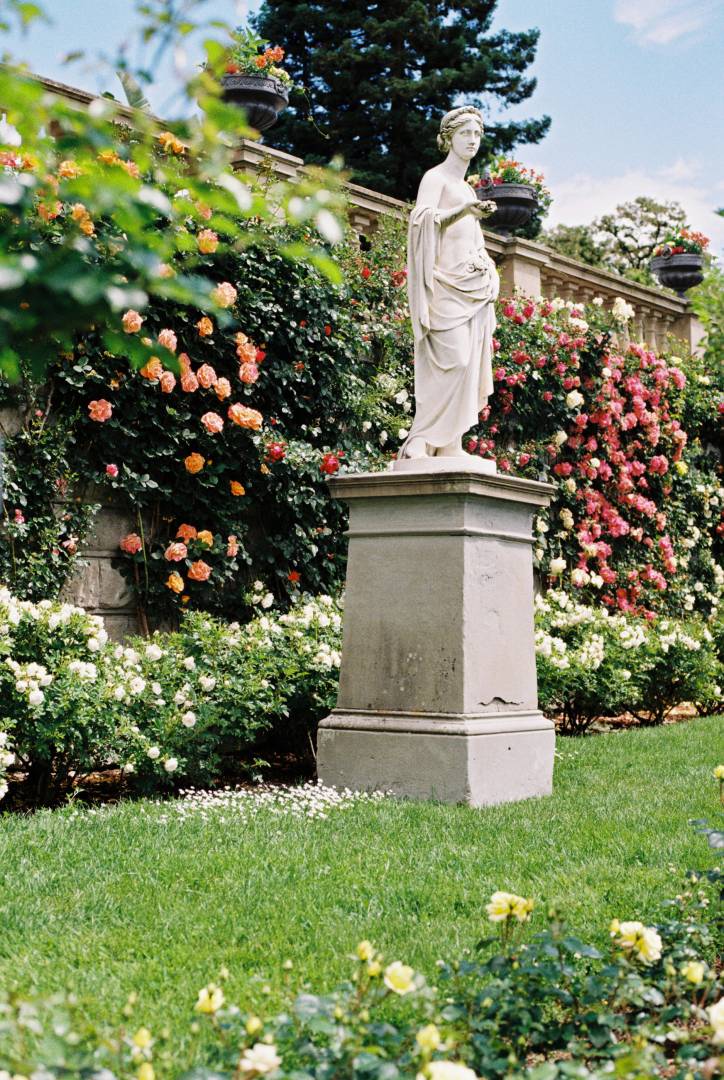
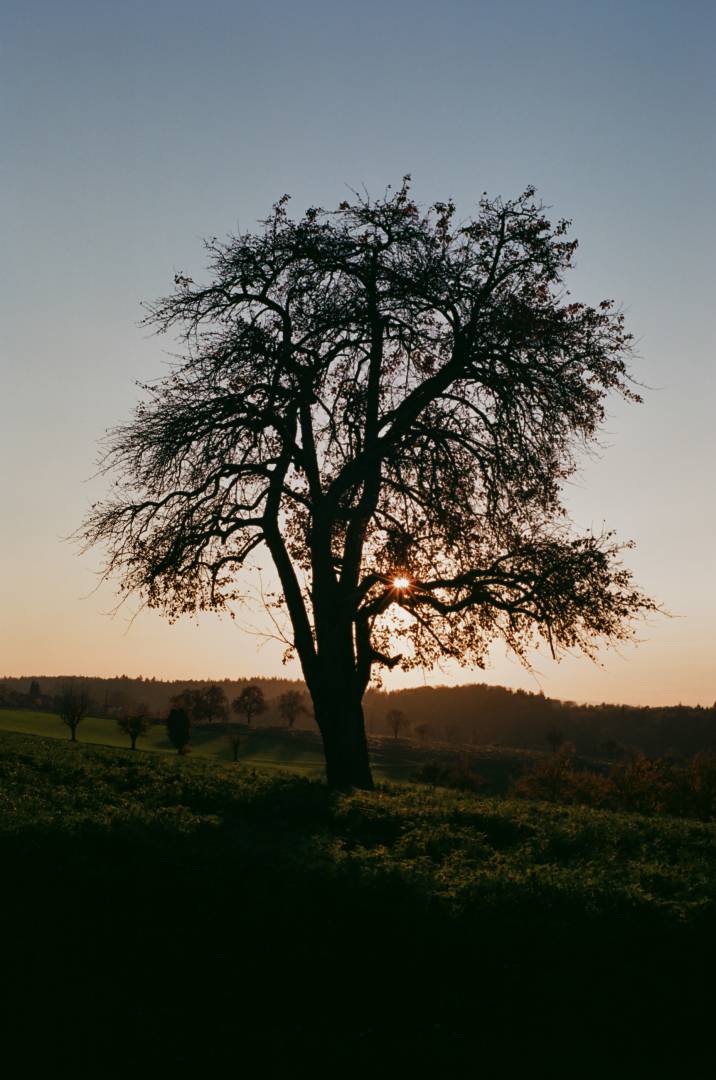
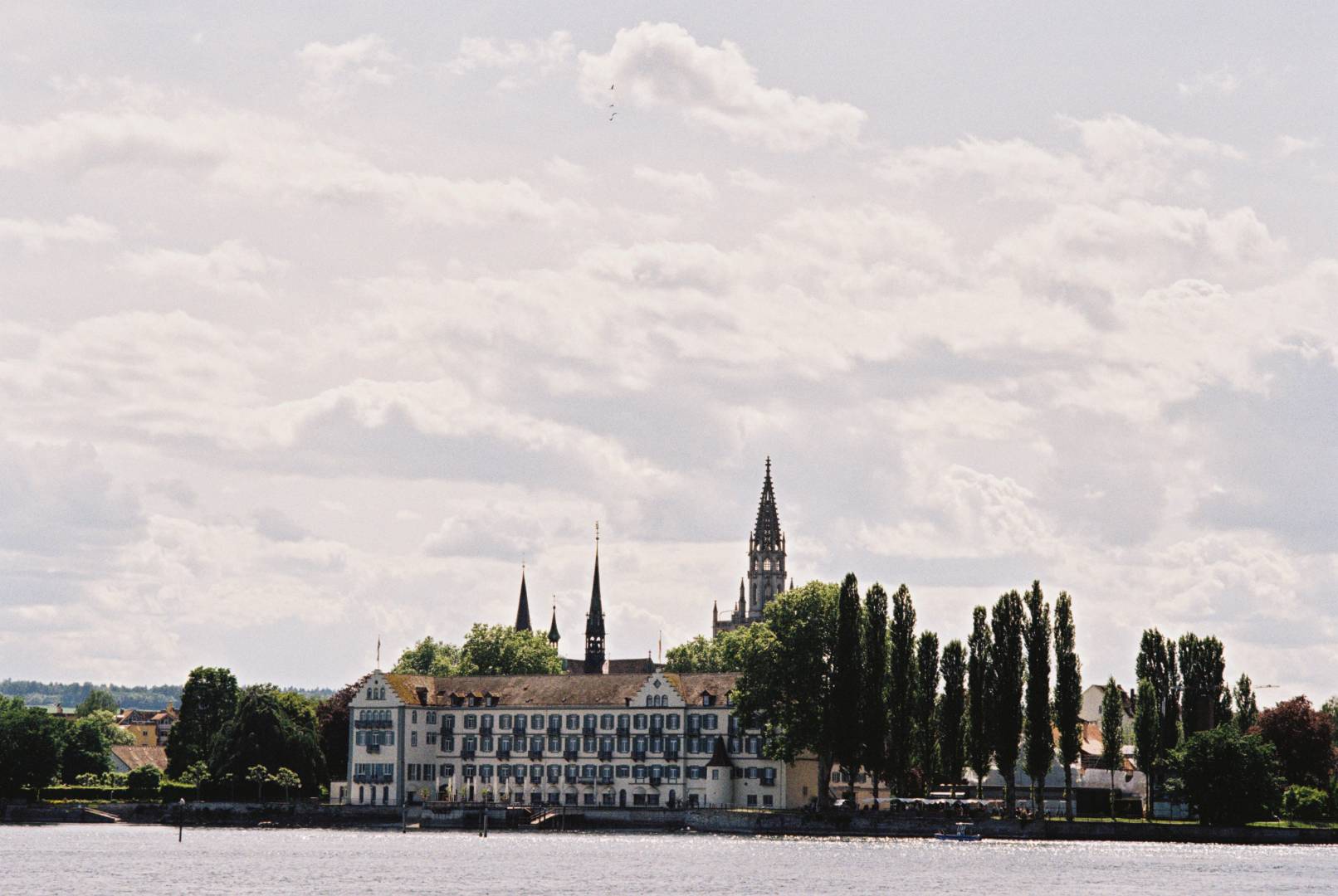


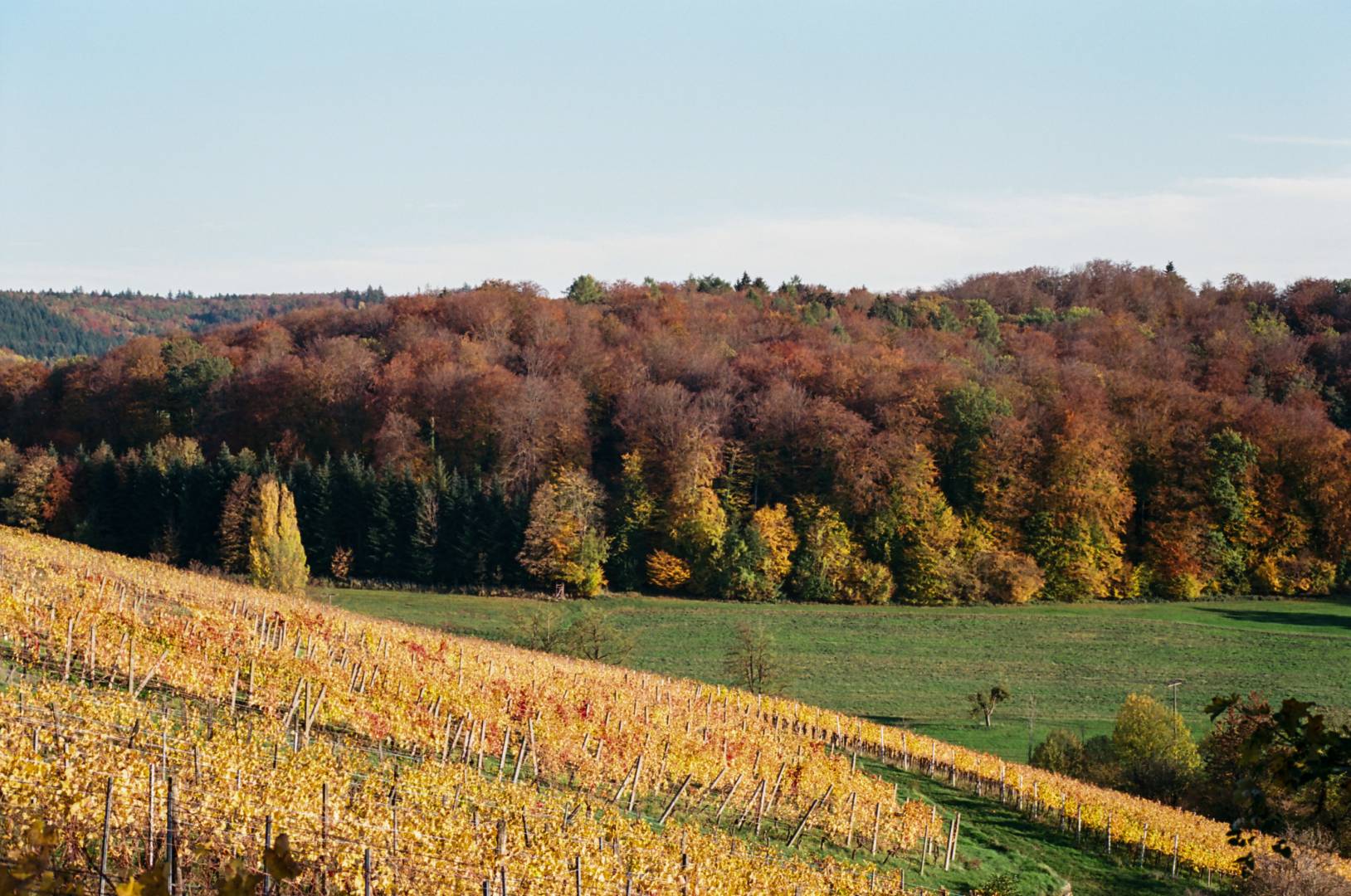

The following photos combine digital cameras with the Konica 50/2 lens
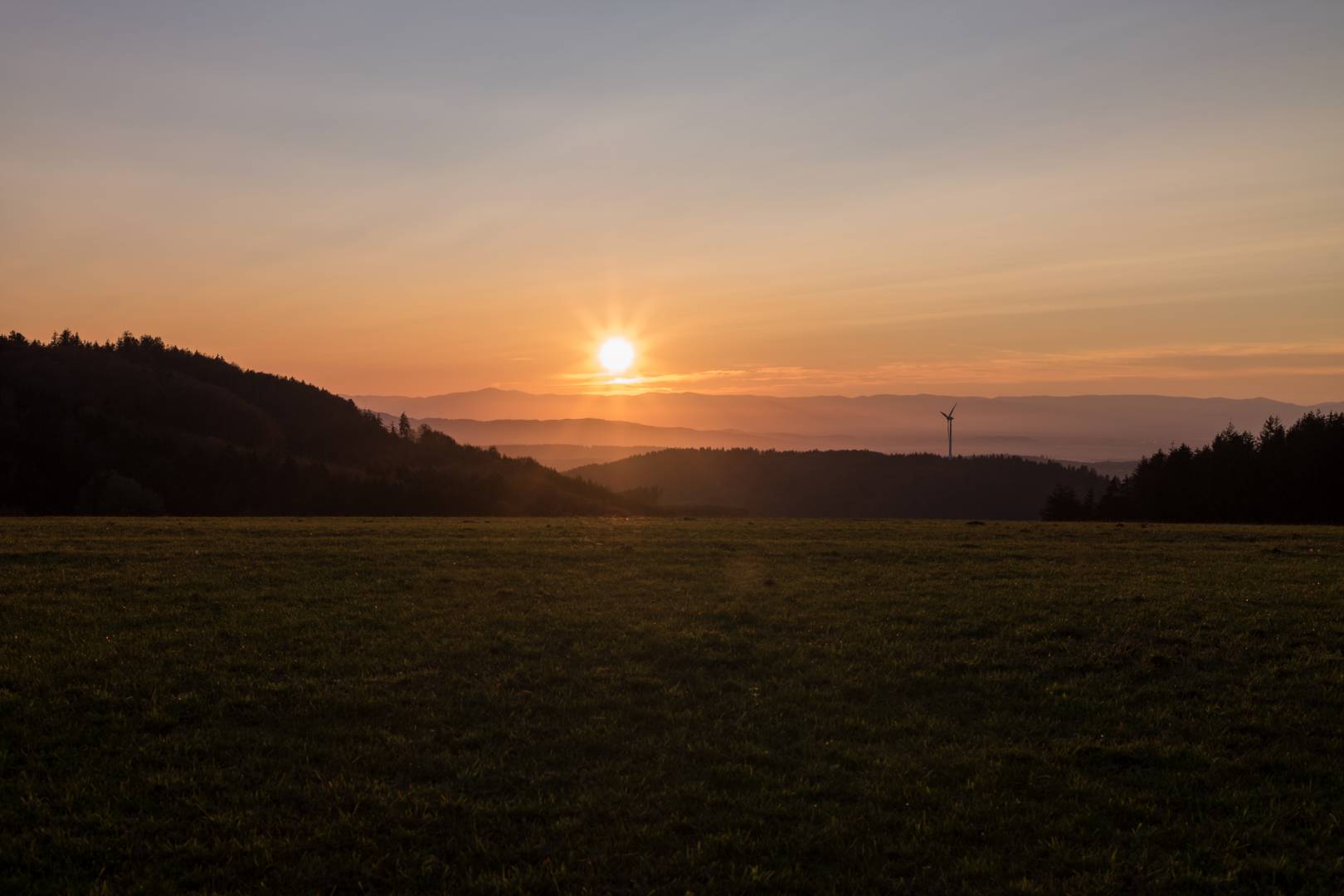
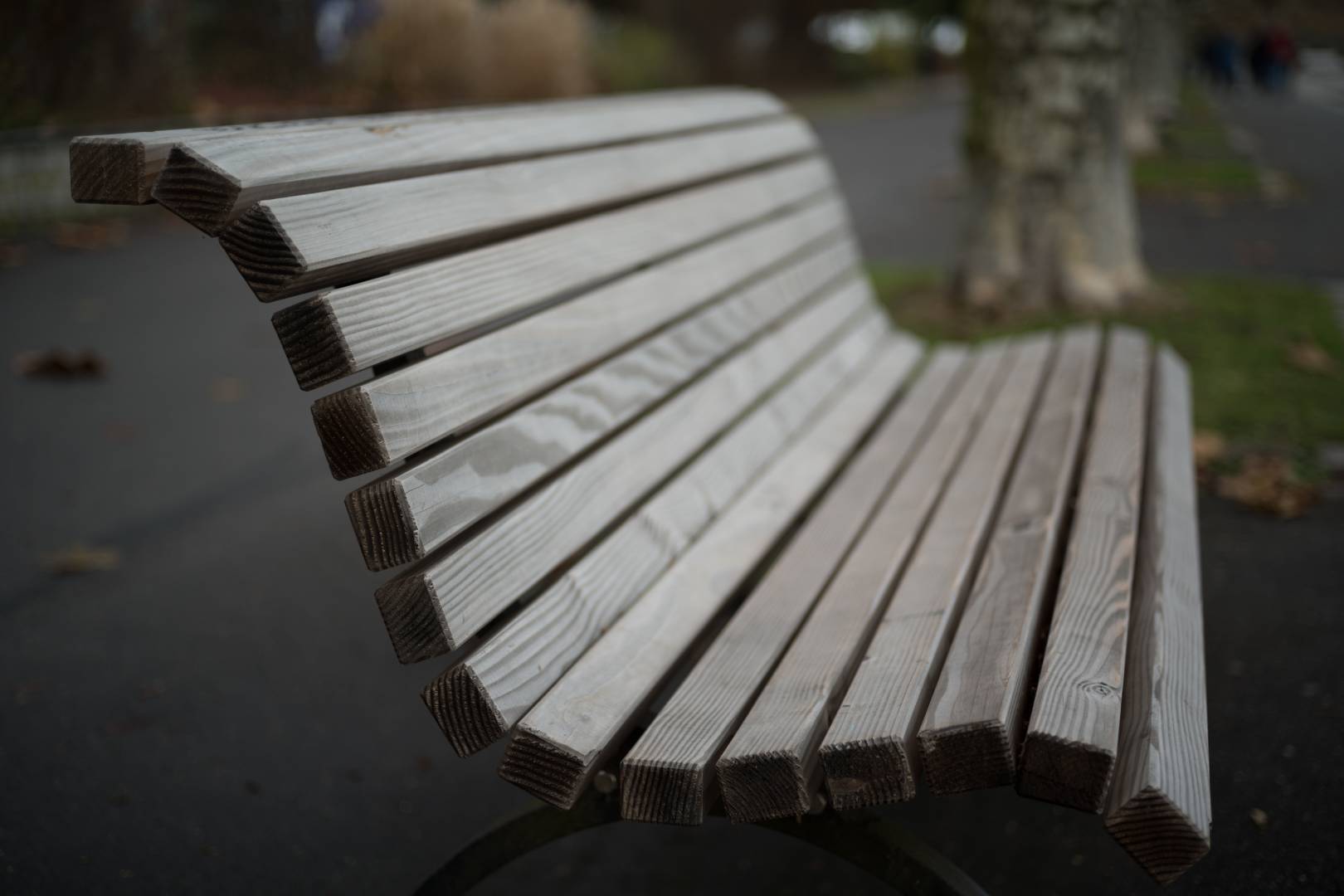
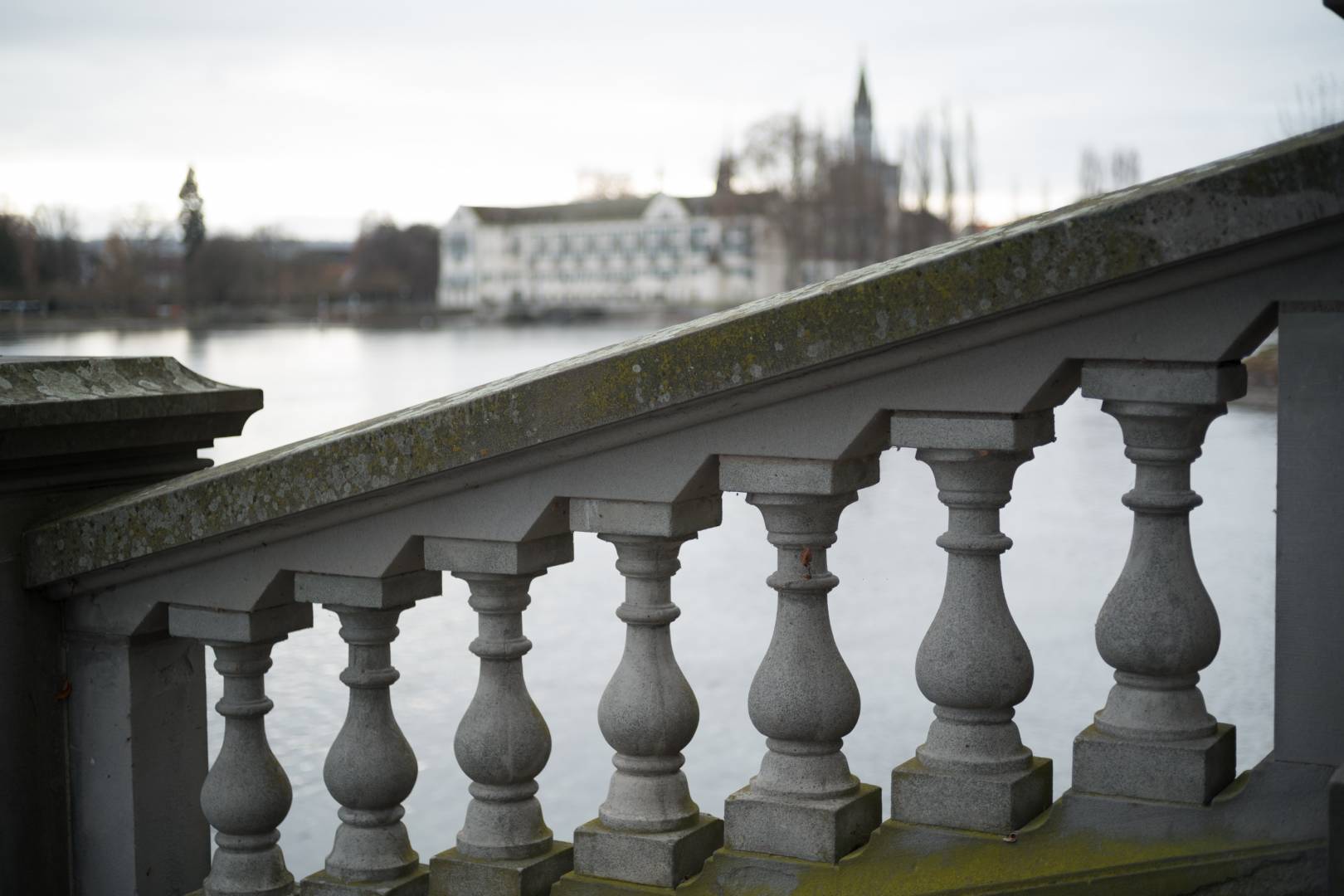

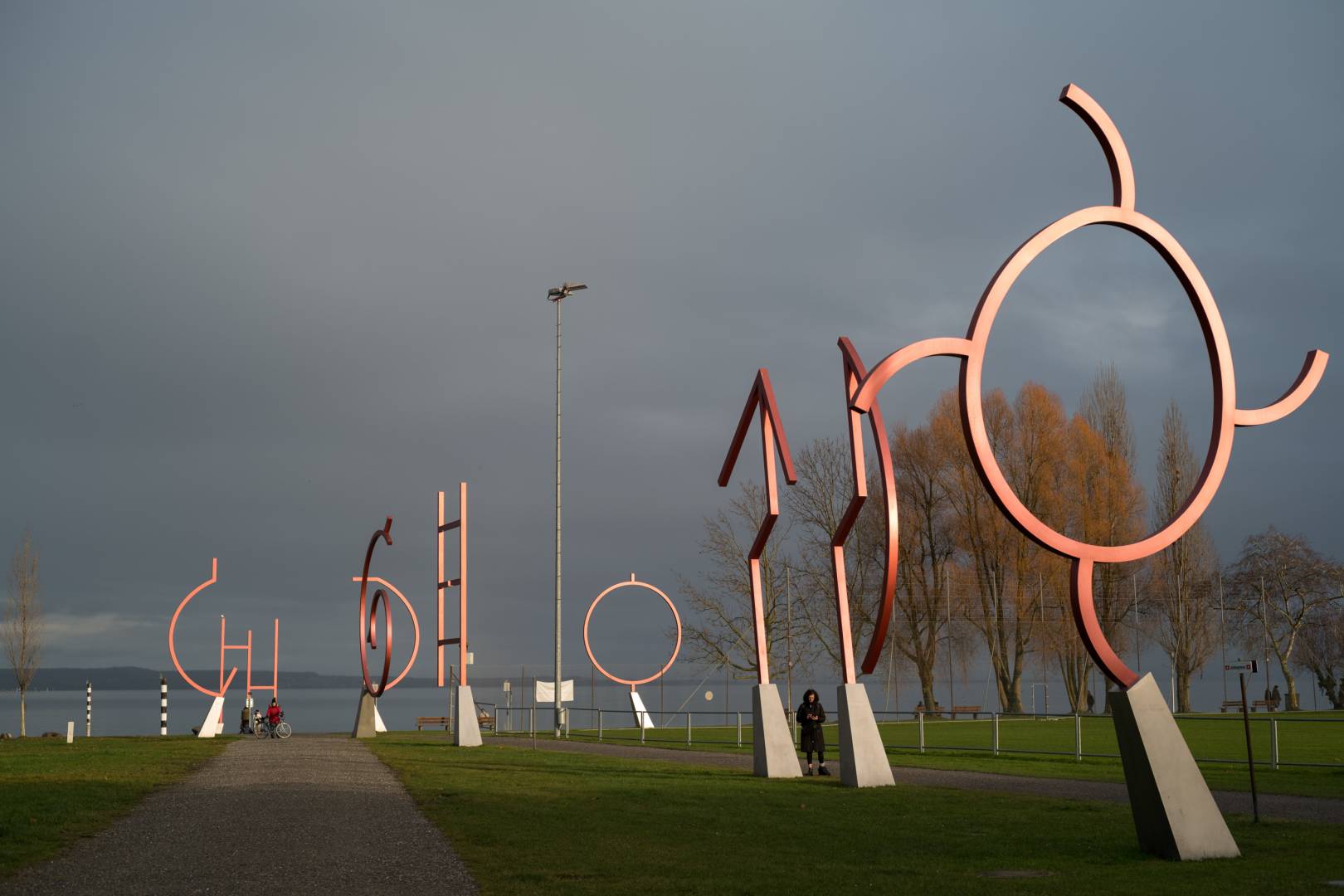

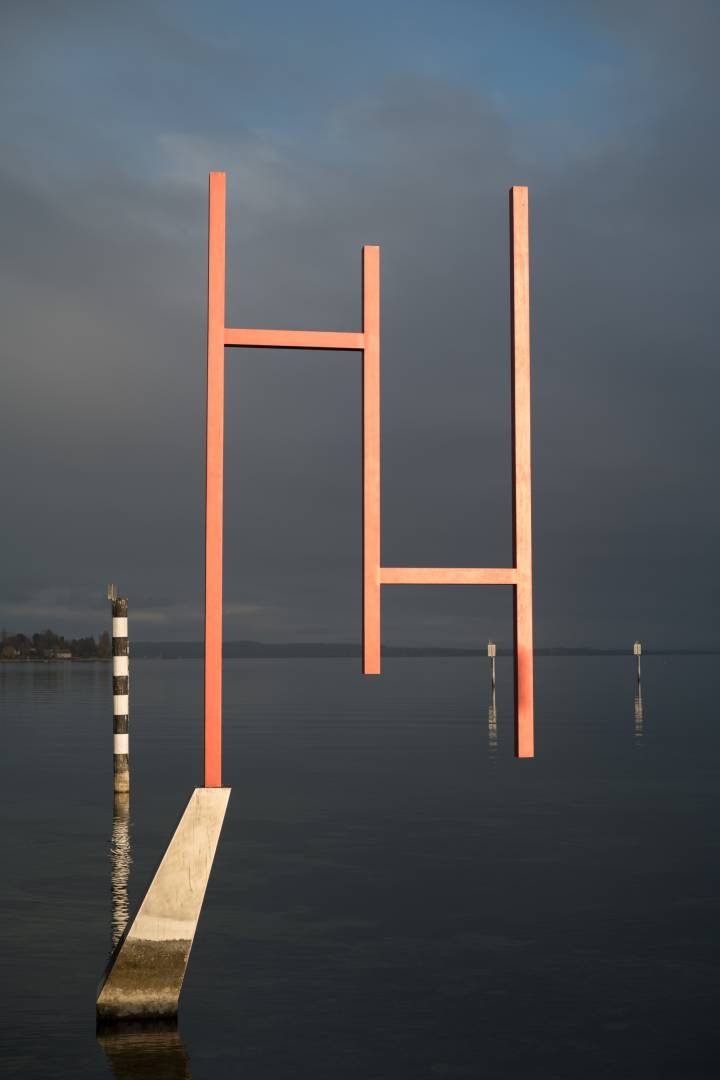
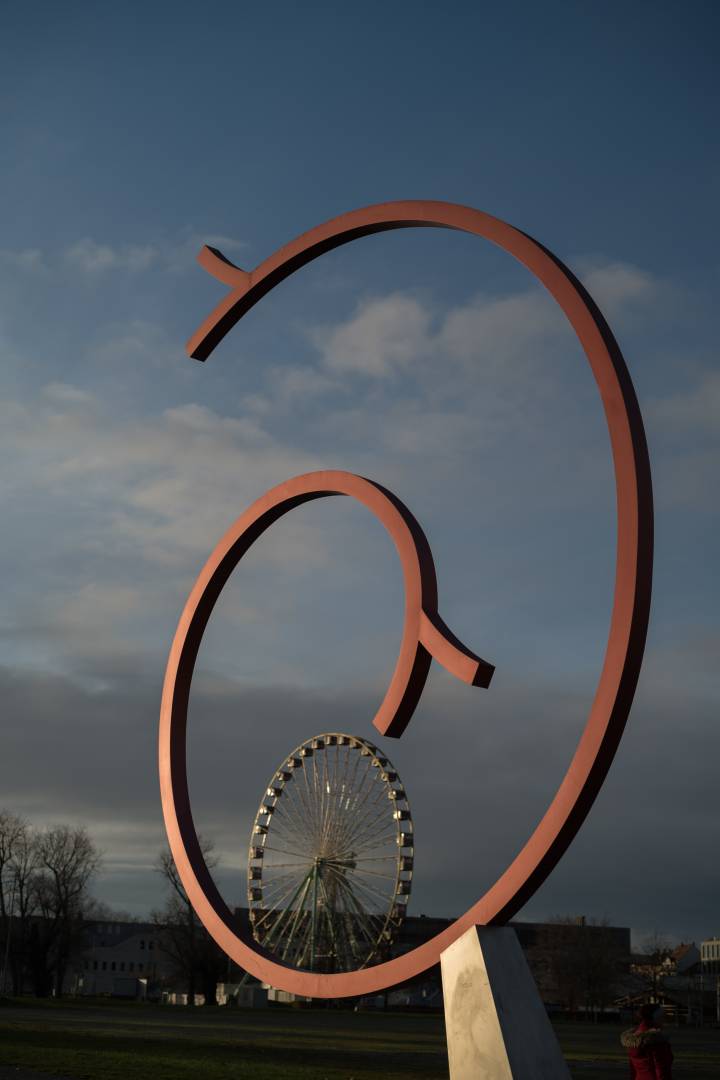
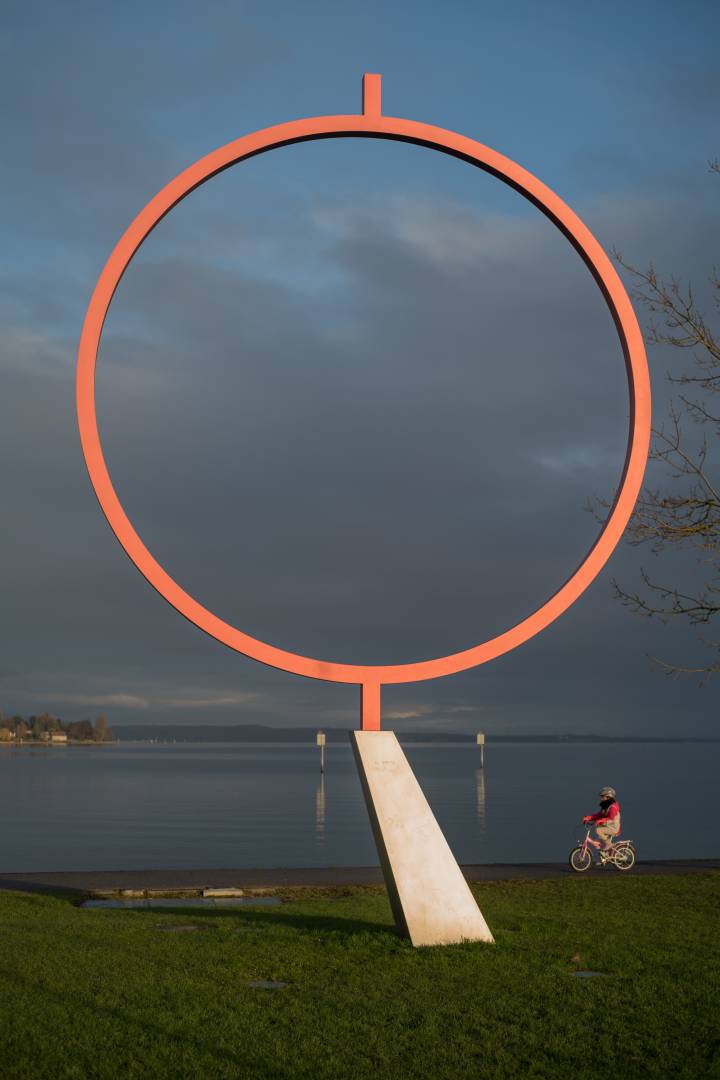
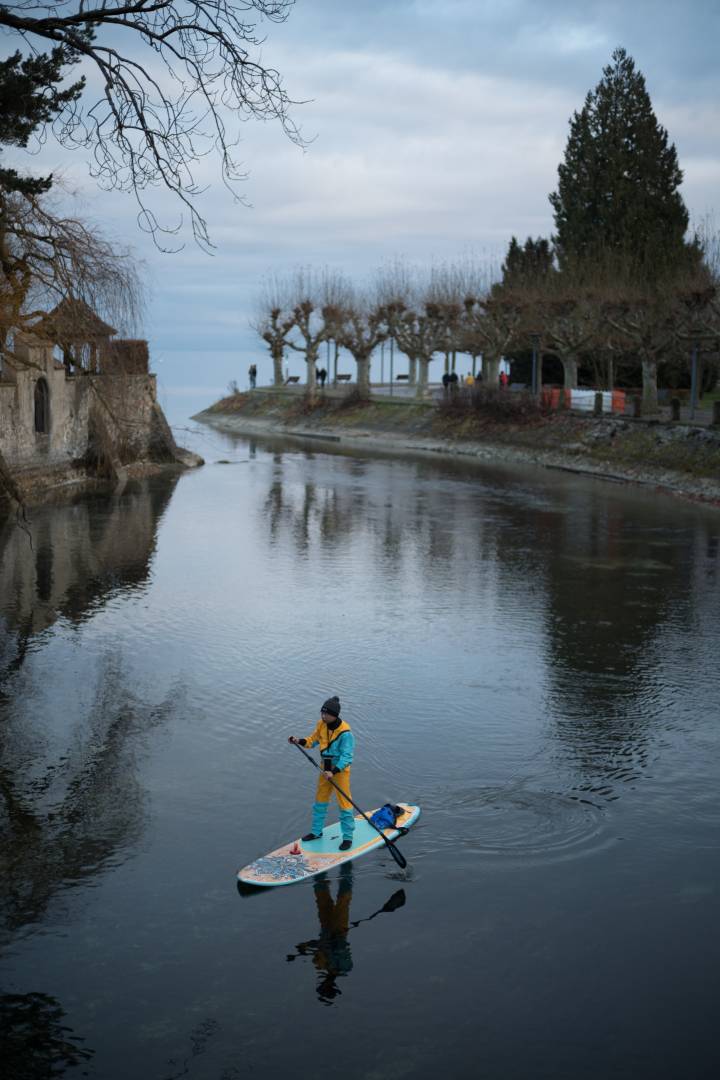
Probably, the Konica Hexar RF just came at the wrong moment
Only a few years after its market launch, in 2003, the Konica Haxar RF was discontinued. I heard that it was still available for years as a remaining stock and at very affordable prices, but those times are over. I believe that for Konica the excursion into the M-world did not pay off. The quantities were certainly not large, R&D cost might never have been covered.
Why this failure? The fact is that Konica came too late to the party. In the early 2000s, hardly anybody believed in a future for analogue photography; Konica was targeting the wrong market segment.
My camera’s packaging says proudly that the camera is “for the professional”, but almost all professionals were then using SLRs, and, furthermore, they were also switching to digital even in these days. What’s more, at Konica the photo division was no longer receiving much attention at Konica. Remember, those were the years when even Leica was on the verge of failing and it is quite possible that the rangefinder market could have collapsed entirely.
Spare parts, repair facilities: Buying a Konica Hexar RF is a risk
What remains is a camera that combines many pioneering achievements. The Konica Hexar RF certainly is more than an interesting marginal note in the history of the rangefinder camera. It was, is and remains a great piece of technology. It is fun to use and offers everything you need to take excellent pictures (at least as far as the camera is concerned). And the Hexar’s build quality is excellent, well up to Leica’s standard. You will love to hold this piece of engineering in your hands. It is solid, not too light and not too heavy.

Good copies now usually cost over 1,000 euros. With the 50/2 included, the price will be even higher. So, the Konica Hexar RF is not a cheap alternative. But it is a serious option, and don’t be too much deterred by the claimed compatibility problems with Leica M lenses. I couldn’t find any of this on my camera in practical use with a 35 Summicron and a 75 Summarit. But I have to add that these were more or less superficial trials. What should be considered are spare parts supply and repair possibilities. From Konica you should not expect any help, I was told.
Conclusion: The Konica Hexar RF is an excellent modern camera but it could not create a fanbase
Finally, I want to come back to the initial question: Is the Konica Hexar RF the camera that the Leica M7 should always have been? The M7 seemed to be almost outdated when it was launched in 2002, some three years after the Konica Hexar RF. The decision to retain the fabric shutter limits the M7 to 1/1000 second, and the 1/50 flash sync is 1950s standard. A verdict based on a purely rational basis probably ends in favour of the Konica Hexar RF. Nevertheless, the Konica was short-lived, while the M7 survived until 2018. The big difference is that the Leica M7 was firmly supported by its manufacturer, and by its users even more so. It’s easier to survive if you have fans and not just customers.
The M Files: Get in-depth knowledge of M-Mount lenses, cameras and suitable accessories
The M Files is an ongoing project on Macfilos that focuses on photographic equipment with or for Leica M-Mount, made by companies other than Leica or which are otherwise not part of Leica’s M system. It follows a more or less encyclopaedic approach without being scientific. The focus is always on the real-life use and useability of cameras, lenses and other items. Products covered by The M Files include cameras, lenses, viewfinders, light meters and more. Some of the brands in the growing list are Contax, Konica, Minolta, Rollei, Voigtländer and Zeiss.
Die M-Files: M-Mount-Objektive, -Kameras und passendes Zubehör jenseits von Leica M
Die M-Files sind ein Langzeit-Projekt, das sich auf Foto-Ausrüstungsteile mit oder für Leica M-Bajonett konzentriert, die von anderen Firmen als Leica hergestellt wurden oder die nicht zum M-System von Leica gehören. Es verfolgt einen mehr oder weniger enzyklopädischen Ansatz, ohne wissenschaftlich zu sein. Der Schwerpunkt liegt immer auf der praktischen Nutzung von Kameras, Objektiven und anderen Produkten. Zu den in den M-Files besprochenen Produkten gehören Kameras, Objektive, Sucher, Belichtungsmesser und mehr. Einige der Marken auf der wachsenden Liste sind Contax, Konica, Minolta, Rollei, Voigtländer und Zeiss. In deutscher Sprache erscheinen die Inhalte auf www.messsucherwelt.com.

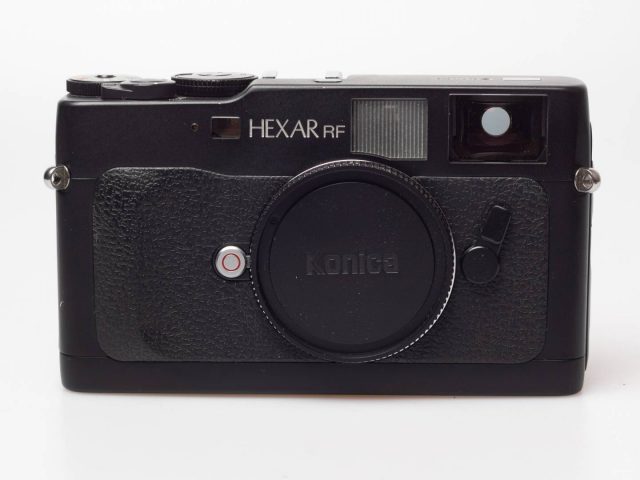




I had, and extensively used two Hexar RFs when they were current, but a couple of problems surfaced that I had trouble getting fixed. One was getting the rangefinders, particularly the vertical adjustment not only fixed but then staying fixed for more than a couple of weeks.
Still, overall a fine camera. I did like the shutter and transport mechanism, which is basically the same as the one in the Xpan which I had concurrently. I have to say though, that my copies of these cameras were able to shoot a lot faster than yours. Say, about 60 times as fast as stated. 🙂
After I had these I got an M7 as a gift from my wife which I still have (both). Overall, I shot a lot more with the Hexars but they both have their strengths.
I was casually looking for a comparison of the M3’s overall thickness to the Hexar RF (since I don’t own any analog Leicas any more – just the thicc digital Ms), and I came across this piece. Nicely done.
The Hexar is still the most advanced (and usable) film M anyone ever made. Although the CLE is often touted as such, plain-Jane TTL flash on a(n intentionally crippled) rangefinder was (and is) not as big a deal as integral motor drive, a really fast (and non-burning) metal shutter with a livable synch speed, optical frame spacing, and exposure lock. If you look at what you get today – where every RF is unsupported except Leica – it’s strangely the value leader (and today, you can just get a 2-year aftermarket warranty in which they will buy you out if they can’t fix the camera).
From what I’ve heard over the years, the Konica was never intended to be a mass-market success; it was a project for some neglected SLR-era engineers (the FT-1 guys) to have a last technological hurrah, just like the Hexar AF. The 21-35mm is exactly that type of exercise; there is a Konica whitepaper on it as a proof of concept for follow-focus zooms on non-SLR cameras. The fact is that Konica out-engineered Leica by a wide margin twenty-two years ago.
Dear Dante, thanks for your feedback. The Hexar RF is a lovely camera, and it will see some more use this winter. It is such a great piece of engineering, and the 21-35 is the very lens Leica should have made 20 years ago. It combines the two most important (in my eves) focal lengths for a rangefinder photographer. As to your question: Overall thickness is identical at 36 millimetres (Hexar RF and M6TTL, both including the ring at the eyepiece). JP
Dear Wayne,
thank you for your comment. I am happy that at least some of the images are perceived by their own right. As I wrote, they are mainly intended to show the character of the lenses and perhaps also the exposure charcteristics of a camera (however, AE settings during scanning are a limiting factor here). I hope you will find some more pictures you like in the episodes to come.
Being the maverick when buying a camera I know. My first camera was a second-hand Olympus OM-1 in the late 80s. I chose it because it was not too expensive, and because my father ownend an OM-2 and some nice lenses I could borrow. Everone else went for Nikon or Canon back then. Only in the last years I realised that a opted for a real design icon back then (that the OM-1 is a beautiful camera I always knew). I still have it, and some day I will write about this first love, too.
Best JP
Scroll down to Number 6, here: tinyurl.com/43lz5c53 – huh?
Hah. I knew you have a good taste… and the OM-2 cuts really a fine figure in this eclectic mix. Not only the camera bodies, the lenses were both good and beautiful in the OM system. Kind of tragic that Olympus managed to lose its pioneering position several times in the last decades (Pen system, OM system, early compact and bridge digital cameras, Four Thirds, Micro Four Thirds). I do not think that any other company managed that.
Just now catching up on Macfilos.
I agree completely with your personal favourite image from the art border. It’s special as an abstract presentation and its use of light. And your first image in the fog was another standout for me.
The article jogged my memory of the very first SLR camera I owned – a Konica Autoreflex TC, which I bought it when everyone else was buying Canon AE-1. But I can’t remember what happened to it as I ultimately moved on into a Minolta world. It’s 50mm f1.7 Konica Hexanon lens did give us some great images that we treasure to this day.
I bought – several years ago – a used, but immaculate, Konica 50mm f1.2 for a Leica ..but although it was sharp, focused perfectly, and never failed, I didn’t like its slightly “fussy” out-of-focus ‘bokeh’, which was too distracting – for me, anyway – and too attention-catching.
I like soft, blurry backgrounds to really melt away. So I took the lens to Ivor at Red Dot Cameras, and chopped it in, along with a Leica 50mm f1.4, for a Leica 50mm f2 whaddyamacallit ..the Apo. The ‘bokeh’ on that was / is just as soft as with the 50mm f1.4 – I doubt that anyone can tell the difference – and wa-a-a-y better (..softer, feather-edged..) than the Konica 50mm f1.2.
Ivor rubbed his hands with glee, I’m sure, as the 50mm f1.2 could sell for a whopping price, but I was happy with the trade: the 50mm Apo is everything that the 50mm f1.4 is, but far crisper, and it’s way better than the annoying “fussy” bokeh of the Konica f1.2.
I do have, here to hand, the Konica 21-35mm which you mention (..I could have put it in the box for you, J-P, but wanted to keep at least ONE 21mm for myself while you try the others..) and it’s a great little lens; sharp, easy to focus, minimal vignetting, sensible 90 degree ‘throw’ from 0.8 metres (closest focus) to infinity, with a quick twist from 21mm – which I often use – to 35mm (which I never use). Widest aperture is f3.4 at 21mm, but f4 at 35mm (..same size hole in the lens, but smaller effective aperture at 35mm).
I never fancied the Konica RF camera, but I DO (sometimes) use the Leica M7, because I bought one with the 80% magnification finder, which makes it so much easier to use with longer lenses like 75mm, 90mm and 135mm. (For use with a 21mm, I just ‘guess’ that 90 degree width of view, and everything’s in focus.)
Thank you, David, in every respect. I think you are the only person I know who ever owned the rare 50/1.2 Konica lens. Interesting what you are writing about the bokeh. When all the M Files work is done, I will shoot my Olympus OM Zuikos 55/1.2 and 50/1.2 the check their rendering. I have not used them for ages, but I never had the heart to give them away. The Konica 21-35 sound super interesting, and I am in awe of your collection. A whole life of professional work. Wow. JP
I was very disappointed with the Olympus 55mm f1.2 (..which I still have, somewhere..) as it’s just not sharp at f1.2 ..rather ‘smeary’ all over: too much flare, really. The later 50mm f1.2 is a FAR better lens; really clear and sharp. But those are just my opinions ..I look forward to reading yours. (But the 50mm f1.4 is an even better lens still!)
I owned one for a while, and liked it. However, the rangefinder used to lose vertical alignment a lot, and being used to more traditional cameras, I probably didn’t bond with it as such. At the time I also had a few of the very wide angle Voigtlander lenses with matching finders, and it made a first class point and shoot when left in AE.
Sadly, both the Hexar and most of the Voigtlander lenses are long gone. They really were a great combination.
John, it is never too late. If you buy a good camera, I think you could sell it without any loss in a couple of years in case you do not get along with it. With good I mean: repairable, reliant, clean and well taken care of. And with good I also mean: A camera that you are happy with or even proud of and that will be used frequently but respectfully by you. But mind you, it could grow into a long relationship. JP
I really enjoyed the pictures you showed with this camera-lens combination. Something about the colour and the gentle definition. I’ve really abandoned rangefinder ambitions, but this article could draw me back to reconsider. Thank you.
I’m hooked to your reviews. At the time I had gone the Contax G1 way, so did not want to invest in another rangefinder system however alluring it had been. It also had a motorized film advance. The only gripe compared to M system cameras is that you could not have out of the frame image as the viewfinder and lens matched excactly as a dslr or mirrorless camera. The Contax Zeiss lenses were stellar and the camera was silent. Thanks for your reviews
Jean
Dear Jean, I am glad to read that. I started The M Files just for myself right away but then felt that others might be interested, too. There are so many superb cameras out there that I could easly spend the decades to come (I keep my fingers crossed) with using and reviewing them. To the Contax G system I was heavily drawn at one point, but I then decided that it makes absolutey no sense to have two rangefinder systems at the same time. And for all job that needed an autofocus camera, I had a Canon EOS 3 back then. By the way, a great camera with an excellent multi-spot metering system, but now I am disgressing. However, when I am through with The M Files, I probably turn to the Contax indeed. Best, JP
Great work again, Joerg-Peter. I like what I am seeing from the Ektar 100 above and I can see why the Hexanon lens is highly prized as is the Hexanon RF. I have an M7, but, for usage, I much prefer my M6 or an M3. They just fit better in my hand and are nicer to use.
William
Thank you, William, I am really happy to have you a benevolent reader. As to film – I found all pro films from Kodak good. The Ektar has the best sharpness, the Portra the creamiest colours (if you like that), and the ProImage the best value for money. From Fuji, I only used the cheap C-200 and the slightly more expensive Superia 400 so far, but I am not yet really firm in my judgement. Many other Fuji films seem to be sold out at the moment or probably no longer available. At Lichtblick, my photo store in Konstanz, they told me that colour negative films have been in high demand for the last 12 months or so. So let’s hope the industy will continue to cater for the needs of us film camera owners and users.
I bought a new Hexar kit when they first came out and at least at first thought it marvelous but then the rangefinder went out of alignment within a matter of days so I took it in person to what was then Konica UK for re adjustment.
Sadly however, and although the camera had not been knocked or dropped it’s rangefinder lost both distance and vertical alignment acuracy yet again so off I went with it back to Konica UK for them to have yet another go at getting the camera right.
This in fact happened several more times during which I also discovered a considerable focusing error or difference between using the Konica’s own Leica 50mm f2 Summicron lookalike standard lens and my actual late model Leica 50mm f2, so back with it I went again with what I thought were enlightening results.
I.E. The Konica technicians said ‘Look please read the instruction book and our advertising blurb for this camera more closely’ which of course I then did, and in fact what it ammounted too was Konica never actually claimed these M like cameras or lenses were Leica coupled, mereley that they were Leica TYPE
Further it was spelled out to me they always knew there were albeit slight focusing differences or discrepencies between the two systems, but that should or would not be a problem as long as I only used Hexar lenses as they alone were guaranteed to match to the Hexar body.
I also tested the 50mm mm f2 Hexar lens on my Leica’s and allowing for the very slight focusing scale differences found the Hexar to be very good, indeed I thought it virtually as good as the late 50mm Summicron, though I did not test specifically for flare so cannot comment on that.
Anyway as it had proved impossible to retain rangefinder accuracy with it I then sold the boxed Hexar outfit at a considerable loss, though it was a great shame as otherwis it was a great camera and with very useful motorised wind on as well
Thank you, Don, for this account. I am sorry to read that you had such bad luck with a camera that you found otherwise good. This is always a shame, I fully agree.
I also heard of rangefinder issues on the Hexar RF. So, I tested my own copy with a 75 Summarit and 35 Summicron, both wide open, and obtained good results. Maybe, the Hexar bodies that survived to this day were the ones which had no production failures; or which were repaired/adjusted once or (as your story suggests) even serveral times.
I fully agree that rangefinder accuracy is crucial in all the cameras that The M Files cover. If you shoot on film you will notice any problem only when it is too late. With a modern digital body you can still use live view or at least check your results on the spot (if you are not a M-D user). All this is impossible when working on film.
Stephen Gandy reports quite extensively about the compatibility between Konica and Leica, so I decided to be brief on this (just repeating known knowledge helps nobody, I think). Gandy also writes about Konica’s official statement that there is no guarantee that lenses and body work together perfectly. I wonder why… If you can do a slightly different mechanic, you should be able to produce it right away, aren’t you?
So, there are still some questions around this camera. I am determined to continue to use the Hexar RF. Maybe I can add some more information by the end of the year or so.
Dante Stella has written extensively about this over the years ..about the supposed differences between the lens-to-film-plane differences between Leicas and Konica RFs, such as here: http://www.dantestella.com/technical/flange.html and also here: http://www.dantestella.com/technical/hexarrf.html ..and particularly at point 4, “Can’t we all get along?” about halfway down that page. You may need to engage humour mode before tackling all that, though!
Having written both of those pieces, I would comment that a good number of Leica people then had (and if still alive have) no sense of humor.